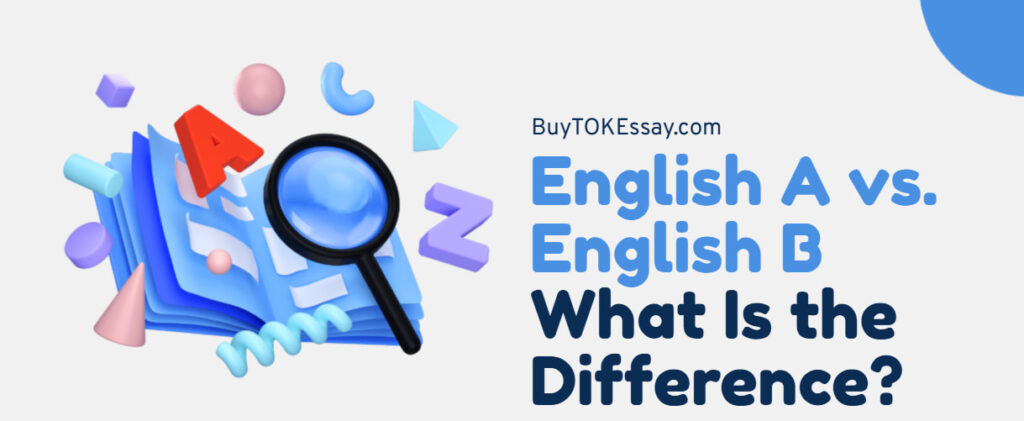Your grade depends on how well you know the subject’s terminology. The IB examiners want to see that you can explain concepts and topics with the kind of language real professionals would apply. So, we’ve compiled a list of all the Business and Management terms to use in IB assignments.
- 📌 Business Foundations & Ownership
- 📌 Marketing & Market Research
- 📌 Corporate Strategy & Growth
- 📌 Leadership & Management
- 📌 Organizational Culture
- Need Help with Your IB Assignments?
- 📌 Human Resources & Workforce
- 📌 Motivation & Pay Systems
- 📌 Industrial Relations & Conflict
- 📌 Finance: Sources of Finance
- 📌 Accounting & Financial Records
- 📌 Costs, Revenue & Profit
- 📌 Investment & Appraisal
- 📌 Cash Flow & Liquidity
- 📌 Ratios & Financial Analysis
- 📌 Budgeting & Control
- 📌 External Environment
- How to Build Your Business and Management Vocabulary?
- Why You Should Apply BuyTOKEssay for Your IB Assignments?
📌 Business Foundations & Ownership
Annual General Meeting (AGM)
Articles of Association
Business angels
Business etiquette
Business model
Business plan
Certificate of Incorporation
Co-op
Divorce of ownership and control
Entrepreneurs
Franchisee
Franchisor
Licensing costs
Memorandum of Association
Partnerships
Private Limited Company (Ltd)
Private sector
Public corporations
Public Limited Company (PLC)
Public sector
Royalty payments
Share capital
Share issue
Shares
Silent partner
Sole trader
Stakeholder
📌 Marketing & Market Research
4Ps / 7Ps
AB testing
Ad hoc research
Advertising
BCG Matrix
Bespoke research
Boston Matrix
Brand awareness
Brand loyalty
Brand value
Cluster sampling
Consumer panels
Continuous research
Convenience sampling
Desk research
Distribution channels
Field research
Focus group
Government publications
Market analysis
Market research
Marketing mix
Media articles
Non-sampling errors
Observations
Packaging
Penetration pricing
Population
Primary research
Promotion
Psychological pricing
Public Relations
Qualitative research
Quantitative research
Quota sampling
Random sampling
Retailers
Sampling
Sampling errors
Secondary research
Skimming
Snowballing
Stratified random sampling
Supply chain
Survey
Wholesalers
📌 Corporate Strategy & Growth
Acquisitions
Aims
Change resistance
Competitive advantage
Competitive strategy
Conglomerate integration
External growth
Globalisation
Goodwill
Horizontal integration
Hostile takeover
Inorganic growth
Internal growth
Joint venture
Lateral integration
Mergers
Mission statement
Objectives
Organic growth
Sectoral change
SMART objectives
Speculation
Strategic alliance
Structural change
Tactics
Takeover
Takeover bid
Vertical integration (backward)
Vertical integration (forward)
Vision statement
📌 Leadership & Management
Autocratic leadership
Commanding
Controlling
Decentralisation
Delegation
Democratic leadership
Directors
Functions of management
Integrated management
Laissez-faire leadership
Leadership skills
Leadership style
Management
Managers
Paternalistic leadership
Situational leadership
📌 Organizational Culture
Adaptive cultures
Artefacts
Collectivism
Corporate culture
Cultural intelligence
Culture clash
Culture gap
Espoused values
Individualism
Inert cultures
Innovative cultures
Long-term orientation
Masculinity
Organizational culture
Person cultures
Power cultures
Role cultures
Shared basic assumptions
Short-term orientation
Sociability
Solidarity
Task cultures
Tough-guy, macho culture
Uncertainty avoidance

Need Help with Your IB Assignments?
Whether starting from scratch or fine-tuning your existing assignment to meet your supervisor’s demands, the BuyTOKEssay.com team is here to make your dream of a perfect paper a reality.
Just get IA help from our IB experts and say goodbye to writer’s block!
📌 Human Resources & Workforce
360-degree appraisal
360-degree feedback
Application form
Application process
Appraisal
Commercial employment agencies
Constructive dismissal
Cover letter
Curriculum vitae (CV)
Dismissal
Employee referrals
External recruitment
Flexible work patterns
Flextime
Formative appraisal
Gross misconduct
Homeworking
Human resource management (HRM)
Incompetence
Induction training
Internal recruitment
Involuntary redundancies
Job analysis
Job centres
Job description
Job sharing
Job specification
Labour
Layoffs
Letter of application
Mentoring
Misconduct
Off-the-job training
Offshoring
On-the-job training
Outsourcing
Part-time employment
Performance management
Person specification
Portfolio working
Recruitment
Redeployment
Redundancy
Reshoring
Retention
Retrenchment
Selection process
Self-appraisal
Shiftwork
Stress management
Summative appraisal
Team building
Teleworking
Testing
Training
Voluntary redundancies
Workforce
Workforce planning
📌 Motivation & Pay Systems
Adam’s Equity Theory
Commission
Employee share ownership schemes
Esteem needs
Extrinsic motivation
Fringe payments
Herzberg’s Two Factor Theory
Intrinsic motivation
Maslow’s Hierarchy of Needs
Mayo’s Hawthorne effect
Motivation
Non-financial rewards
Overtime rate
Performance-related pay
Perks
Physiological needs
Piece rate
Pink’s Drive Theory
Profit-related pay
Salaries
Self-actualisation
Social needs
Taylor’s motivation theory
Time rate
Wages
📌 Industrial Relations & Conflict
Agreement manipulation
Arbitration
Collective bargaining
Communication
Compromise
Conciliation
Conflict
Conflict resolution
Employers’ associations
Employers’ representatives
Explicit coercion
Facilitation
Go-slows
Implicit coercion
Industrial action
Industrial democracy
Involvement facilitation
Labour unions
Lock-outs
Mediation
Negotiation
Overtime bans
Participation
Pendulum arbitration
Public relations
Sanctions
Self-associations
Staff associations
Strike action
Threat of redundancies
Trade unions
Walk-outs
Work to rule
📌 Finance: Sources of Finance
Bonds
Business angels
Business development loan
Debentures
Donations
Equity finance
External financing
Grants
Hire purchase
Initial Public Offering (IPO)
Interest-bearing sources
Internal financing
Leasing
Loan capital
Retained profit
Revenue streams
Sale and leaseback
Share issue
Sponsorship revenue
Subsidies
Venture capital
Venture capitalist
📌 Accounting & Financial Records
Accruals
Amortisation
Appropriation account
Asset life expectancy
Asset value
Assets
Assets employed
Auditing
Balance sheet
Book value
Capital and reserves
Capital employed
Capital invested
Contingent liabilities
Current assets
Current liabilities
Depreciation
Diminishing balance depreciation
Dividends
Exceptional items
Final accounts
Financial audit
Financial records
Financial statements
Fixed assets
Goodwill
Income statement
Intangible fixed assets
Inventory
Liabilities
Liquid assets
Long-term liabilities
Mortgage
Net assets
Non-current liabilities
Non-physical assets
Obsolete assets
Outstanding loans
Owners’ equity
Profit and Loss account
Reducing balance depreciation
Remaining stock value
Reserves
Residual value
Scrap value
Stock valuation
Straight line depreciation
Tangible fixed assets
Wear and tear
Zero residual value
📌 Costs, Revenue & Profit
Allocation of overheads
Break-even point
Break-even quantity
Contribution
Cost of goods sold (COGS)
Direct costs
Direct labour costs
Fixed costs
Gross profit
Gross profit margin
Indirect costs
Margin of safety
Net profit
Net profit margin
Operating profit
Output-dependent costs
Output-independent costs
Overhead costs
Overheads
Profit
Profit margin
Profit quality
Revenue
Revenue expenditure
Sales revenue
Semi-variable costs
Total revenue
Variable costs
📌 Investment & Appraisal
Accounting Rate of Return (ARR)
Average rate of return
Capital expenditure
Capital outlay
Cumulative cash flow
Discount factor
Discount rate
Discount table
Discount value
Discounted Cash Flow (DCF)
Discounting
Expenditure
Internal Rate of Return (IRR)
Investment
Investment appraisal
Investment return
Net Present Value (NPV)
Payback period
Present value
Project lifespan
Qualitative investment appraisal
Quantitative investment appraisal
Risk profile
Short-termism
Short-termism approach
Time value of money
Useful life of asset
📌 Cash Flow & Liquidity
Bankruptcy
Cash
Cash flow cycle
Cash flow forecast
Cash flow statement
Cash inflows
Cash outflows
Contingency fund
Credit control
Credit period
Creditors
Debtors
Expenses
Insolvency
Liquidation
Liquidity
Liquidity crisis
Liquidity position
Liquidity problem
Net cash flow
Over-borrowing
Overdrafts
Overheads
Overstocking
Overtrading
Utility bills
Working capital
Working capital cycle
📌 Ratios & Financial Analysis
Adverse variance
Benchmark figures
Benchmarking
Creditor days
Creditor days ratio
Current ratio
Debtor days
Debtor days ratio
Efficiency ratios
Favourable variance
Gearing ratio
Highly geared
Inventory turnover
Liquidity ratios
Profitability ratios
Quick ratio
Stock turnover
Stock turnover ratio
Variance analysis
📌 Budgeting & Control
Adverse variance
Annual budgets
Budget
Budget holder
Budgetary control
Budgeted outcome
Budgeting
Cost centre
Favourable variance
Flexible budgets
Marketing budget
Master budget
Overspending
Production budget
Profit centre
Sales budget
SMART budgeting
Staffing budget
Underselling
Variance analysis
Zero-based budgeting

📌 External Environment
Anti-trust laws
Anticompetitive behaviour
Bureaucracy
Business ethics
Competition legislation
Consumer protection legislation
Corporate Social Responsibility (CSR)
Deregulation
Employee protection legislation
Environmental protection laws
Ethical business practice
Language barriers
Multiculturalism
Non-governmental organizations (NGOs)
Price transparency
Private sector
Public sector
Social audits
Social enterprise
Social protection legislation
Technology and safety standards
How to Build Your Business and Management Vocabulary?
Building your Business and Management vocabulary is one of the smartest ways to boost your performance in IB assignments. Examiners want to see you use precise terminology that reflects a solid understanding of the subject. The good news? Expanding your vocabulary is less about memorizing definitions and more about actively using the right words in your writing.
One of the most effective ways is to actively use all these Business and Management words in your essays, Internal Assessments, and case study responses.
For example, instead of saying “money spent,” you can write “capital expenditure.” Instead of “business owner,” you could use “entrepreneur” or “shareholder.” These subtle changes signal to examiners that you’re thinking in IB language.
You can also try these simple strategies. They work really well for me, so I recommend all of them.
- Create flashcards with key terms and short definitions.
- Read sample IB Business and Management essays to see how top-scoring students apply vocabulary.
- Practice paraphrasing by rewriting your own notes using advanced terms.
- Build word clusters (for example, all terms related to finance, marketing, or strategy) so they’re easier to recall.
- Use vocabulary in class discussions to make it part of your natural expression.
The IB really values clear and precise writing. So, when you use the right terms, you’re making your work sound more professional and easier to follow.
From what I’ve seen, the sooner you start practicing with these words, the more natural they’ll feel when you’re writing essays or doing exams.
Why You Should Apply BuyTOKEssay for Your IB Assignments?
We are well aware of how difficult the IB may be. There are stringent deadlines and high expectations, whether you are writing on a subject-specific report, an extended essay, a TOK essay, or an Internal Assessment.
That’s why we’re here: to provide IB students with the specialized academic support they need to succeed in their program.
What sets us apart is that we provide custom, IB-focused solutions that reflect examiner expectations. Our team consists of writers who understand IB rubrics, subject-specific terms, and the precise level of analysis required. When you work with us, you get original assignments that are structured according to IB criteria.
Here are a few reasons why students apply to BuyTOKEssay service:
- Full IB coverage – TOK essays and exhibitions, Extended Essays, Internal Assessments, commentaries, and more.
- Expert IB writers – specialists who know how to integrate AOKs, WOKs, data analysis, and real-life examples.
- Originality guaranteed – plagiarism-free work, written from scratch, with reports included.
- Flexible delivery – from urgent deadlines to long-term projects, we adapt to your schedule.
- Revision support – we refine and polish until your assignment meets the standard.
In my opinion, the best part of using our service is that it saves you stress.
In addition, by reviewing our structure, vocabulary, and argumentation, you can strengthen your own skills and feel more confident in future tasks. That’s why using BuyTOKEssay.com for IB assignments is a smart move for students who want to get better grades with less pressure.





